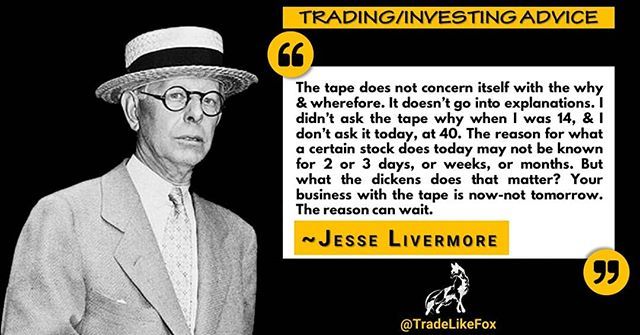Contents
The value of the U.S. dollar comes from its recognised stability and strength as well as its status as the world’s reserve currency. This means an expansion in economic output; it will lead to higher average incomes, higher output and higher expenditure. However, there is no guarantee a strong economy will lead to an increase in the value of the currency. A strong economy could – in some circumstances – lead to a fall in the value of the currency. Deflation, i.e. a prolonged decline in prices, can also be detrimental to the economy as a whole.
- The reason for this medium-term orientation is that monetary policy measures only affect price level developments with a certain time lag – a timeframe of around one and a half years is often assumed.
- The more people who own Bitcoin and conduct business in Bitcoin, the more it stabilizes.
- Hedonic methods make it possible to calculate the monetary value of the quality differential between the old and new models, distinguishing it from the “pure” change in price.
- It makes imports more engaging, causing the demand for native merchandise to fall.
The ECB Governing Council considers that this can be best achieved by aiming for a 2% inflation rate over the medium term. This inflation target, published in July 2021, is symmetric, meaning negative and positive deviations of inflation from the target are equally undesirable. The reason for this medium-term orientation is that monetary policy measures only affect price level developments with a certain time lag – a timeframe of around one and a half years is often assumed. It is therefore impossible to counteract undesirable price developments in the short term using the tools available to the central bank. In fact, attempting to do so might even cause unintended price developments to gain momentum in the medium term. Investors are well aware that a devaluation strategy can be used, and can build this into their expectations—much to the chagrin of central banks.
Random Glossary term
It did not devalue the currency by a large enough amount, which showed that while still following thepeggingpolicy, it was unwilling to take the necessary painful steps. Anderson is CPA, doctor of accounting, and an accounting and finance professor who has been working in the accounting and finance industries for more than 20 years. Her expertise covers a wide range of accounting, corporate finance, taxes, lending, and personal finance areas. Trading Station, MetaTrader 4 and ZuluTrader are four of the forex industry leaders in market connectivity. However, these currencies are viewed to have been more susceptible to policy interference.
If the market expects the central bank to devalue the currency—and thus increase the exchange rate—the possibility of boosting foreign reserves through an increase in aggregate demand is not realized. Instead, the central bank must use its reserves to shrink the money supply which increases the domestic interest rate. The G7 already believes that “no global stablecoin project should begin operation until the legal, regulatory, and oversight challenges are adequately addressed” . In the short run, devaluation also increases interest rates, which must be offset by the central bank through an increase in the money supply and an increase in foreign reserves. As mentioned earlier, propping up a fixed exchange rate can eat through a country’s reserves quickly, and devaluing the currency can add back reserves.
Inflation therefore makes it more difficult for broad sections of the population to build up wealth and also diminishes the purchasing power of private old-age provisions. This dampens the incentive to build up private savings for retirement, which can lead to an increase in old-age poverty in the long term and thus have a negative impact on the economy and society. Using hedonic methods, it is possible to calculate the impact of individual product features on product prices.
Another recommendation is to reduce the size of your trades in relation to your overall account balance. For example, if you normally risk 4% of your total trading account balance in stable market conditions, you may want to reduce that to only 2% in volatile conditions in order to cut your exposure to losses. Highly volatile currencies may trade within a range for a time, but they will be more prone to breakouts and erratic movements. In normal circumstances, a price breakout from a range might imply the establishment or continuation of a trend. After identifying a currency in range-bound, or “sideways,” conditions, traders will want to establish floors and ceilings for their trades, known popularly as support and resistance.
When going long on a currency, traders will want to set a buy order when the currency price reaches the level of support and a sell order for the level of resistance. Finally, for some major currencies, including the yen, the euro and the pound, the Chicago Board Options Exchange publishes its volatility index, VIX, to show the 30-day implied volatility based on options lack of stable currency generally leads to prices. The VIX calculation, also known informally as the “fear index,” was initially developed for S&P 500 index options but was later extended to other underlying instruments like commodities and currencies. The best way to tell if a country’s currency is stable is to look at its economic indicators and see how they compare to other countries’ economies.
There are many factors that affect currency’s performance and it’s impossible to pick just one that defeats all others with great advantage on all accounts. New Zealand dollars are often referred to as “kiwi”, since the one-dollar coins depict the kiwi bird, which is one of the national symbols of the country. As of the first quarter of 2021, the Canadian dollar has taken the 6th place as the reserve world currency. It is believed that the Canadian dollar is mostly affected by the American economy.
Trading Station Mobile
However, a weak dollar also means our exports are extra aggressive in the global market, perhaps saving U.S. jobs in the course of. A strong dollar or increase in the exchange rate is often better for individuals because it makes imports cheaper and lowers inflation. A weak currency or lower exchange rate can be better for an economy and for firms that export goods to other https://1investing.in/ countries. Other important factors include central bank intervention and foreign exchange reserves that can be used to control exchange rate volatility when needed. The symmetric inflation target specifies that, for the euro area as a whole, persistent inflation of 2% or more is just as incompatible with price stability as an inflation rate below 2% in the medium term.
Additionally, US dollars are widely accepted around the world, further contributing to their status as the most traded currency. Thanks to their relative stability compared to other currencies that may be more volatile or prone to market shocks. This means that there are fewer people without jobs who could lose their jobs if there was another economic downturn, which would make it harder for those individuals to pay off their debts. They still have strong ties with the rest of Europe and are seen by many investors as a safe place to invest money. Japan also has a good credit rating with global agencies such as Standard & Poor’s and Moody’s Investors Service, which means that its government bonds are considered very safe investments.


The US Dollar is frequently used as this standard due to its ubiquity and relative stability, but USD is not in actuality an ideal standard of account for a number of reasons. We recommend that you seek independent financial advice and ensure you fully understand the risks involved before trading. However, we live in a very fast-paced world and these are rather trying times, so the situation may change dramatically. Who knows, perhaps some day we will have just one currency that is stable enough to dispel all the doubts about which currency is the most reliable. The Australian Dollar is the national currency of Australia and its adjacent islands.
We’ve read uber-academic articles on this subject, so you don’t have to. Here, we’ll discuss currency stability in the simplest language possible. Southeast Asian economies saw a rapid increase in privately-held debt, which was bolstered in several countries by overinflated asset values. Southeast Asia was home to the tiger economies—including Singapore, Malaysia, China, and South Korea—and theSoutheast Asian crisis.
However, it is virtually impossible to collect millions of individual prices for all goods and services. Therefore, the price developments of a suitable selection of goods are used to determine the change in the price level. Additionally, financial regulations should be imposed to protect against liquidity problems, including a Liquidity Coverage Ratio and a NSFR. The LCR is designed to ensure that banks hold sufficient reserves of high-quality liquid assets to allow them to survive a period of significant liquidity stress lasting 30 calendar days. The LCR requires internationally active banks to hold a stock of HQLA at least as large as expected total net cash outflows over the stress period. The NSFR aims to promote resilience over a longer period by creating incentives for banks to fund their activities with more stable sources of funding on an ongoing basis.
How does stablecoin arbitrage work?
Government debt can quickly become a burden on the economy and weaken its foundations. Sound macroeconomic policies enhance the credibility of the government and strengthen the political institutions. This credibility is vital for economic stability and Americans’ long-term investment decisions that allow the U.S. economy to flourish. Stablecoin arbitrage is typically only performed by institutional investors, given the large sums needed to generate decent returns. Holding onto stablecoins for a long-term investment is not very common; they are primarily used for conducting DeFi trades. Asset-backed stablecoins, including Tether , have mostly retained their peg, although a drop to $0.948 on 12 May worried some.


In contrast, when the value of a dollar strengthens against other currencies, exporters face greater challenges selling American-made products overseas. Currency crises can come in multiple forms but are largely formed when investor sentiment and expectations do not match the economic outlook of a country. Although efficient central bank management can help, predicting the route an economy ultimately takes is difficult to anticipate, thus contributing to a sustained currency crisis.
Price level and purchasing power
The Swiss franc is normally considered a stable currency that’s believed by many to be a “safe haven” for investment, and it shifted about 40% against the euro in a matter of seconds. This prompted losses in the local stock market, export and local services markets, and for many in the currency market who were not positioned for such a move. At first glance, it may seem surprising that the ECB Governing Council is not aiming for a completely stable price level and thus an inflation rate of 0%. However, there are good reasons for the approach of targeting a moderate annual increase in the HICP within the euro area. The rate of change in the HICP compared with the same month of the previous year represents the inflation rate in the euro area. The HICP thus also acts as the public’s yardstick for assessing whether the Eurosystem is succeeding in maintaining price stability and thus fulfilling its statutory mandate.
Accounts
High volatility is characterised by wide price swings of a particular asset in a short period of time. Volatility can be thought of as a market condition, and nearly all currencies may show volatility at one time or another. However, some currencies may be more susceptible to volatility under certain circumstances, or frequently, given the inherent characteristics of the underlying economies that they represent. This means that the country’s economy is stable, and its government has a good financial situation (i.e., they aren’t deeply in debt). This period has also been one of economic uncertainty with the world economy still struggling with the fallout from the financial crisis. The US dollar has an added attraction for its reputation as a global reserve currency – a relatively safe bet compared to the alternatives..
As a result, cities, local governments and firms began producing emergency money (“Notgeld”) – sometimes with the Reichsbank’s approval, sometimes without. When hyperinflation ended in November 1923, 496 quintillion Reichsmark were circulating as banknotes and 727 quintillion Reichsmark as Notgeld banknotes. For example, enterprises could be more confident about the future, discover new business opportunities and, accordingly, increase their investment in machinery and equipment or in research and development. Enterprises’ increased demand for investment might also be motivated by lower interest rates, which make loan-funded investments cheaper, and thus more likely, than when interest rates are higher. Households, too, often base their spending on changes in their financing conditions. This connection is particularly relevant for the economy if falling interest rates lead to an increase in demand for higher-priced durable goods, such as kitchens or cars.
